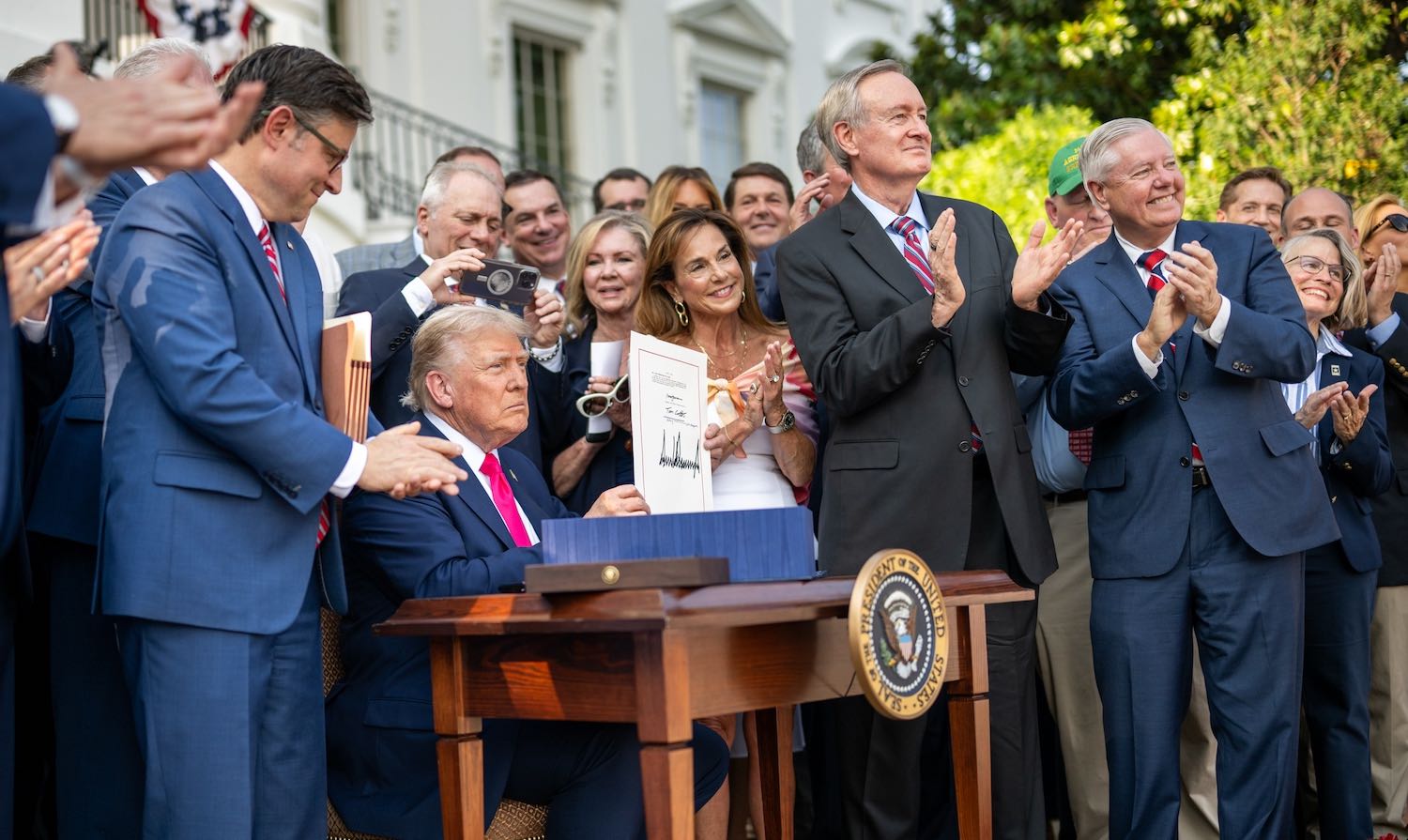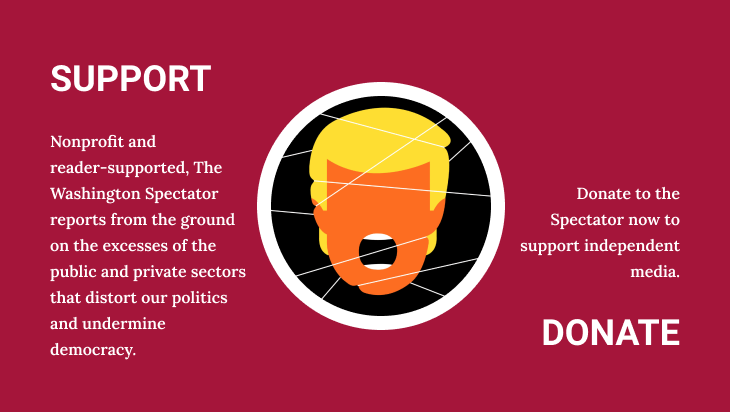In only 6 months, Trump 2.0 has done more damage than in all four years of his first term. Besides his Gestapo-like ICE raids, followed by illegal incarcerations and deportations, Trump has created colossal economic problems. His Big Beautiful Bill is big but nowhere near beautiful. It is the worst piece of economic legislation since the 1930 Smoot-Hawley Act, which helped turn an economic slump caused by the 1929 stock market crash into a decade-long depression.
The Big Bad Bill passed Congress with support from only Vichy Republicans and the MAGA faithful. Trump signed the bill on July 4th, boasting about keeping his 2024 campaign promises—eliminating taxes on tips, overtime, and Social Security. These are more Trump lies seeking to manipulate perceptions of reality.
Tipped workers won’t benefit much, if at all, because most earn so little that they don’t owe taxes. Adding injury to insult, tipped workers generally don’t get health insurance from their employer and will likely lose their insurance due to Trump’s bill (see below). Fewer than 2% of workers receive overtime pay; only 50% of the extra pay from overtime is free from Federal income taxes. Moreover, both tips and overtime are subject to Social Security taxes, and there are limits on how much income is tax free. Finally, Social Security benefits remain subject to taxation, despite what the Social Security Administration claimed in an email sent to Americans in their system.
Combined, these three provisions are peanuts in a huge tax cut. Their total cost is $125 billion, or $31 billion a year; and they all expire in 2029. Behind the smoke and mirrors lurks real change. According to the Congressional Budget Office, large corporations and wealthy individuals get most of the $4.3 trillion in tax cuts over the next decade; and these tax breaks continue indefinitely.
To help pay for this, healthcare spending will fall by more than $1 trillion over 10 years, breaking Trump’s campaign promise of no Medicaid cuts. This provision was needed to keep Republicans worried about rising government debt from voting against the bill.
Healthcare was targeted because, along with defense and Social Security, that’s where the money is. Other spending cuts in the bill are small but pound foolish—things like ending tax incentives for clean energy, cutting nutrition programs for the poor, and making student loans more expensive.
The $1 trillion savings comes from reduced government subsidies for purchasing health insurance through Obamacare and putting work requirements on Medicaid recipients. The former will make health insurance too expensive for millions of Americans, and they will do without it.
The latter is smokescreen. Over 90% of Medicaid recipients work or are exempt from work requirements (for example, because they are disabled and cannot work). In 2018, Arkansas had work requirements for 9 months before the courts ended it. During this time many people eligible for Medicaid were dropped from the program because they could not meet the new, difficult reporting requirements. Between people not buying Obamacare and what happened in Arkansas, 12 million to 20 million Americans will lose their health insurance due to the Big Bad Bill, with the actual number depending on what state governments do to counter the Federal cruelty. Low-income Americans, such as tipped workers, will lose.
The newly uninsured will receive healthcare in emergency rooms, which are required to treat anyone who comes in for care. These people won’t be able to pay their medical bills. Hospitals will bear the cost initially, but will try to pass it on to insurance companies, who will then seek to pass it to its customers. To the extent this succeeds, everyone will face higher premiums and co-pays. To the extent it fails, hospitals will reduce services or close, especially in rural areas.
Medicaid cuts of $1 trillion still won’t prevent soaring government debt. Republicans claim their tax cuts are self-financing because the rich will invest more and the economy will grow. Workers will earn more and pay more in taxes.
We have heard this story before. It has a name—supply-side economics. It also has a bad track record. Past Republican tax cuts failed to spur economic growth. The most recent example is Trump’s 2017 tax cut, which he claimed would lead to 4%-5% growth rates. Instead, economic growth in 2018 and 2019 was 2.45%, about the same rate that prevailed for many years before the tax cut.
Tax cuts, however, do increase budget deficits. Ronald Reagan, who began the supply-side fable, inherited a budget deficit that was 2.6% of US GDP. Following large tax cuts, this grew to 4.5% when Bill Clinton became President. Clinton raised taxes, leaving George W. Bush a budget surplus that was 2.3% of GDP. W’s 2001 and 2003 tax cuts handed Barack Obama a deficit nearly 10% of GDP in 2009 (around half due to the Great Recession). Finally, Trump’s 2017 tax cut increased a deficit that was 3.1% of GDP when he took office to 4.6% of GDP in 2019 (before Covid) and 14.7% of GDP when he left office (more than half due to Covid).
Clearly, deficits grow following Republican tax cuts and shrink when Democrats occupy the White House. And the problem is not out-of-control spending. Government expenditures have been stable (20%-21% of US GDP) since the 1980s, except for the Great Recession and COVID pandemic. The problem is Republican tax cuts that reduced revenues from 18.7% of GDP in 1980 to 16.1% of GDP by 2019.
Nevertheless, 75% of Americans believe budget deficits stem from excessive government spending; only 11% blame low taxes. In fact, the problem is out-of-control Republican tax cuts for the wealthy.
These cuts take two forms. First, the corporate income tax has been slashed. It provided 4% of Federal government revenues in 1980. Since then, it has yielded only 2% of Federal revenues. Second, while individual income tax receipts (relative to US GDP) have not changed much since 1980, there has been a large change in terms of who pays this tax. The top individual income tax rate in 1980 was 70%. Today it is 37%.
Both changes benefit the rich, who own more corporate stock and make more money. Over time their wealth soars. In addition, low tax rates lead corporations to squeeze worker wages and benefits in order to increase corporate profits and executive salaries.
Governments must borrow money when they cut taxes but not spending. They do this by printing bonds (IOUs) and selling them. Absurdly, the government will borrow a large chunk of the Republican tax cuts in order to finance those tax cuts.
Even worse, as government borrowing needs increase due to the Big Bad Bill, the government will have to pay higher interest rates when selling bonds. This will push up interest rates on mortgages and auto loans, which are tied to government bond rates. Again, average Americans suffer.
One silver lining is that people are beginning to catch on. A Quinnipiac University poll found that 55% of Americans opposed Trump’s bill. Fox News found that 59% of registered voters opposed it. The Kaiser Family Foundation found that 64% of Americans had a negative view of the bill and 75% opposed its Medicaid cuts. Another silver lining is that some Republicans now want to reverse the Medicaid cuts they voted for.
A July 14th New Yorker cartoon encapsulates some of the consequences we face if this effort fails. A doctor stands beside a patient in a hospital bed. He says: “You no longer have Medicaid, so expect a Big Beautiful Bill.” To this I would add: also expect fewer government services, higher interest rates, and a lower standard of living.
Steven Pressman is part-time professor of economics at the New School for Social Research, professor emeritus of economics and finance at Monmouth University, and author of Fifty Major Economists (Routledge, 2013).







0 Comments